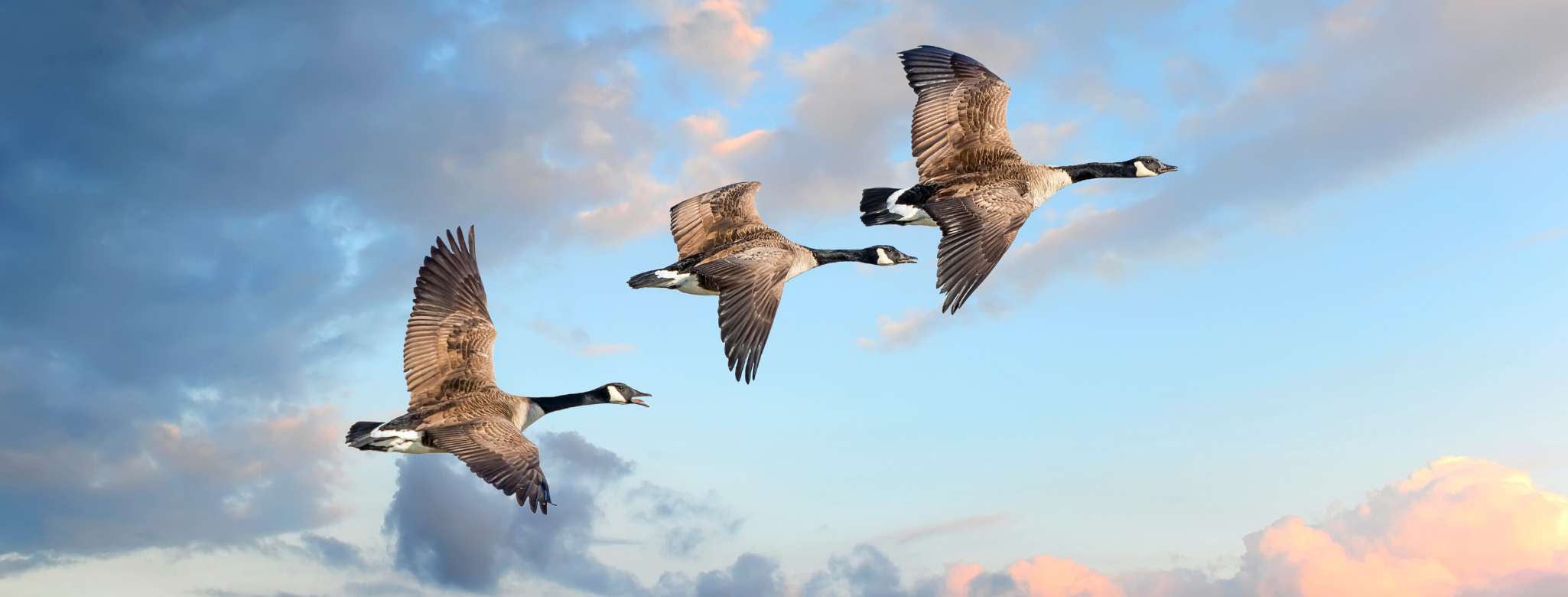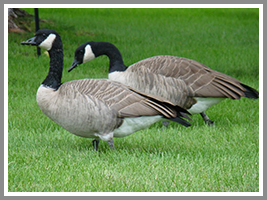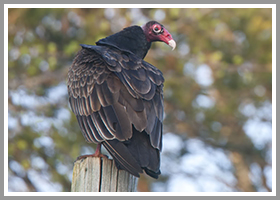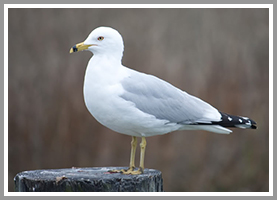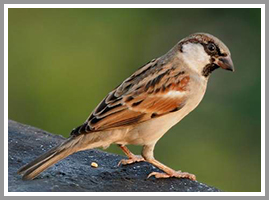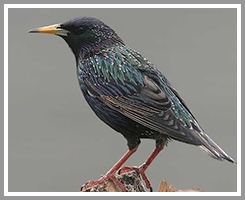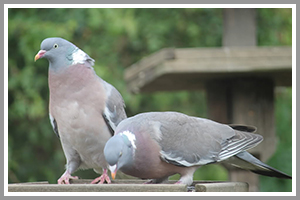Bill: Long, pointed, yellow
Size: 8.5 inches long with 15-inch wingspan, stubby tail
Colors: Black, buff, iridescent, red
Markings: Sexes are identical with allover black plumage highlighted with an iridescent green and purple gloss on the head, back, nape, flanks and chest. Fresh fall plumage has buff tips to feathers giving the birds a heavily spotted look. Wings and the short tail are dark and edged with buff. Legs and feet are red. Winter plumage is duller overall.
Foods: Insects, seeds, fruit, grain
Habitat and Migration: The European starling's native habitat includes a year-round range in Western Europe and around the Caspian Sea that expands to Scandinavia and western Russia in the summer and the Iberian Peninsula, Middle East and northern Africa in the winter. These birds have been introduced in many regions worldwide, including South Africa, Australia and New Zealand. In North America, European starlings are found year-round throughout the continental United States, northern Mexico and southern Canada, expanding further north during summers. Regardless of where the birds are found, they prefer open habitats such as plains, agricultural fields and open woodlands, and in urban areas they are frequently found in yards and parks.
Vocalizations: These are gregarious birds with a wide variety of loud, demanding calls. Typical calls include whistles, chatters, rattles, chips and trills, and they can also imitate numerous other bird species and non-bird sounds. Juvenile birds are especially loud when begging in the nest or shortly after fledging.
Behavior: European starlings are tenacious, energetic birds that can be aggressive when feeding or nesting. During the breeding season they are generally solitary or found in pairs, but in the fall and winter they will form large roosting flocks that may number up to 1 million birds. These large flocks can be primarily starlings or may be mixed with different blackbird species. While feeding, these birds forage on the open ground, prodding into short grass and soil with their bills to seek out insects and grain. They have been known to raid the caches of other birds and will readily steal from one another.
Reproduction: These are monogamous birds that aggressively claim nesting cavities from other species, including woodpeckers, chickadees and bluebirds. A mated pair will produce 2-3 broods of 5-8 eggs each during the breeding season. Both parents incubate the eggs for 12-14 days, and both parents will feed the altricial young for an additional 19-21 days after hatching. The juvenile birds will follow their parents for another 1-2 weeks begging and demanding food
Attracting European Starlings: These birds are easily attracted to backyard feeders with peanut butter, suet and bread scraps, and they will also visit platform and hopper feeders for seed and grain. Because these birds can bring large flocks with voracious appetites to a backyard, many birders prefer to discourage their visits. Using birdfeeders with cages to exclude larger birds and cleaning up seed spilled on the ground can minimize European starling intrusions.
